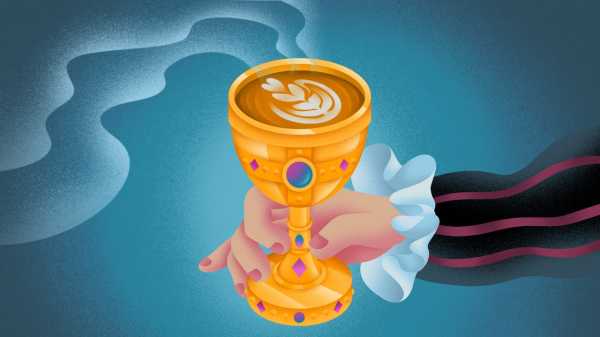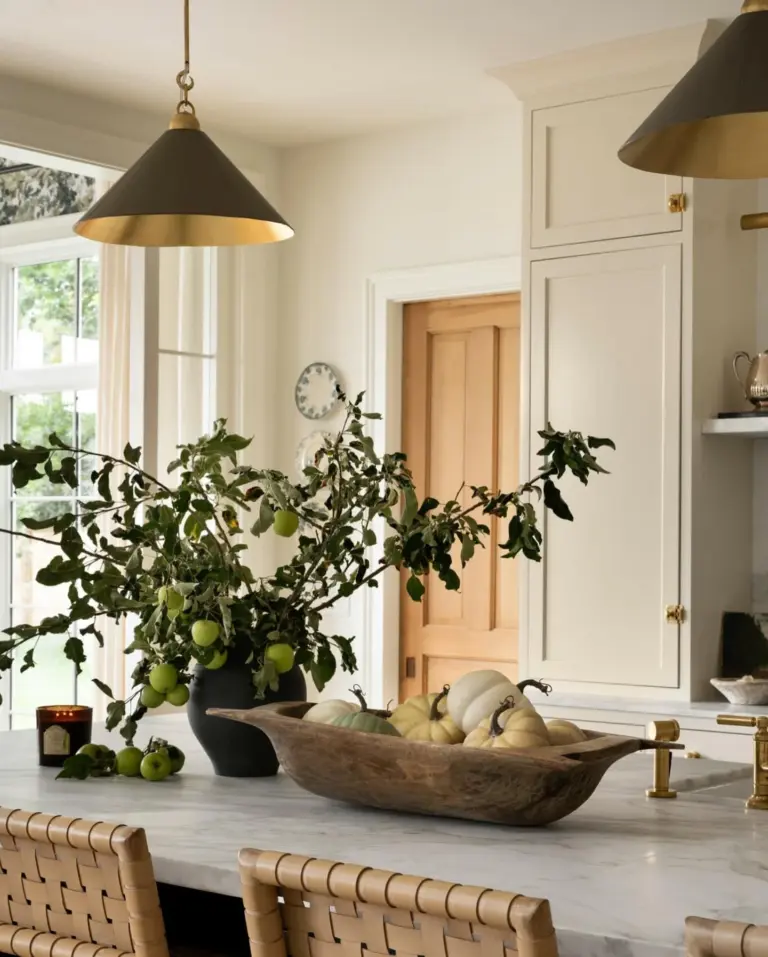
Save this storySave this storySave this storySave this story
In early 2020, Jonas Kooyman, a journalist from Amsterdam, started an Instagram account called @havermelkelite, Dutch for “Oat Milk Élite,” as a way to share his writing about local cultural trends. He had interviewed the author Elizabeth Currid-Halkett about her concept of the “aspirational class,” a demographic that uses nontraditional consumption habits to signal its identity, and he wanted a similar label to describe Amsterdam’s young urban professionals. At the same time, Kooyman noticed a trend at his local coffee shop in Hoofddorppleinbuurt, a gentrifying area just outside central Amsterdam. “Within a couple of months, maybe seventy or eighty per cent of the people before me in line—they would start ordering oat milk instead of regular milk,” Kooyman told me. The choice, he added, was a way to “project a certain image to the outside world”—a conscientious consumerism and a cosmopolitan good taste. (Kooyman also drinks oat milk, but only, he insists, because he is lactose intolerant.)
In the Netherlands, as elsewhere, the oat-milk life style might come with a slew of other familiar consumption choices: bottles of natural orange wine, containers of expensive moisturizer, meals at small-plates restaurants. Kooyman began designing and sharing memes that both satirized and codified these habits, such as a tableau of Drake from the music video for “Hotline Bling” pointing disapprovingly at cow’s milk but approvingly at cheese boards. The posts quickly proved popular. The Oat Milk Élite Instagram now has a hundred and ninety thousand followers, an impressive number considering that the population of the city it targets is only around nine hundred thousand. As the creator of the page, Kooyman has now appeared on magazine covers, launched a podcast, and published a recent collection of essays also called “The Oat Milk Élite.” He gets recognized in public at music festivals and at airports, at home and abroad. “People come together on my page,” Kooyman said, even if they feel a sense of embarrassment intermingled with identification.
Oat Milk Élite is part of a genre of hyperlocal Instagram meme pages that has emerged throughout the past several years, forming a kind of loose network stretching from Europe and the U.S. to Southeast Asia and Australia. In New York, there is Nolita Dirtbag. In Oregon, @northwest_mcm_wholesale. In London, Real Housewives of Clapton and Socks House Meeting (an intentionally nonsensical phrase). In Berlin, Berlin Club Memes. In Sydney, Monkey Boy. In Brussels, Dansaert Vlamingen (referring to residents of the city’s hip Dansaert neighborhood). In Bali, The Canggu Pole, which focusses on scooter culture and tourist problems. The accounts have taken on a role similar to the one once occupied by America’s largely defunct alt-weekly publications. “It is a little bit of a town bulletin board,” Alex Hartman, the creator of Nolita Dirtbag, told me. (Running a meme account is certainly more easily monetized than an alt-weekly newspaper these days: thanks to sponsorship deals and consulting work, Nolita Dirtbag-related endeavors now form Hartman’s full-time job.) But they also have a distinctly international appeal. I’ve been following a number of these accounts, enjoying the voyeuristic look into far-flung subcultures even if I don’t even understand the language in which the posts are written. I don’t know where Uluwatu is in Bali, but now I know that surfers congregate there. On Oat Milk Élite, I didn’t understand the caption “Microtrends zijn mijn persoonlijkheid,” but, from the image below it—a collage of Japanese lampshades, Stanley mugs, and pink bows—I got the gist that it was mocking someone who buys whatever TikTok tells them to. (The English translation is “Microtrends are my personality.”) Kooyman told me, “In every city, you have a different niche meme account, but they all kind of resemble each other.”
The anonymous creator of Real Housewives of Clapton, which has a hundred and ninety-two thousand followers, started the account in January of 2023 “as a bit of a joke, really,” they told me. (The creator didn’t want to reveal their identity, for fear of getting recognized, unfavorably, in the local coffee shops they patronize.) Clapton, where they live, is “generally seen as a trendy part of London,” and it was easy to pick out the habits of its denizens, they said. The account began with obscure local references, including specific restaurants and street names, but became broader over time, hitting the same notes of Le Creuset cookware, matcha lattes, and trendy cult fashion items such as cleft-toed Maison Margiela tabi boots. One recent post, which was actually a piece of sponsored content for the dating app Bumble, is captioned, “You’ll never find a guy like me” above a tableau of items representing an archetypal British lad who considers himself tasteful, including a book on Brutalism and a Carhartt beanie. In other words, this guy is a dime a dozen. The account’s shift away from local-interest items was prompted in part by the difficulty of sourcing enough new material from close at hand—“There’s only so much you can post about an area in London,” the creator said—but it was also an effort to cater to the account’s growing audience outside the U.K. “I see people who live in France, who live in New York, who live in Sydney, all over the world following,” they said. The account now sells its own branded candles and clothes, including a T-shirt emblazoned with the phrase “Natural wine is a hoax,” profiting from the semi-ironic Oat Milk Élite life style.
Both subject matter and meme formats repeat across accounts. There are “Distracted Boyfriend” images referencing rehabbed Dutch dive bars, scribbly “Wojak” faces puffing on Elf Bar vapes, and city neighborhood maps identified by where the residents wear Birkenstocks. (Recently, Kooyman captioned an image of a resolute Trump after the assassination attempt on him, “Me after my first Pilates reformer class,” and provoked some ire of the too-soon variety.) This is the grist collected from days spent trawling social-media platforms, which look the same no matter which country you’re logging on from. The meme accounts follow each other and cross-pollinate. “I saw that Real Housewives of Clapton did a meme on heirloom tomatoes and ever since then I feel like doing something with it,” Kooyman said. (R.H.O.C. had posted a slide show that included a photo of enthusiastic sports fans captioned, “How guys react when someone serves them a bruschetta.”) On a recent trip to Amsterdam, Hartman, of Nolita Dirtbag, met up with the proprietor of @saintsandstarslockerroom, an account named for a local upscale gym, to talk shop. Hartman freely admitted that he had been inspired by defunct Brooklyn-focussed accounts like @tinyhat_skatelife and @meetmeintranspecos to start his own meme-making. Originality is not what these accounts are after. They are looking for legibility and shareability, the rapid building of a shared language through a collection of social signifers. Hartman described the accounts’ underlying subject as “the globalization of what we wear and eat, and of being seen.”
The creator of Real Housewives of Clapton had a theory for why niche consumer objects have become such potent symbols online. For millennials and Gen Z-ers, material gain is more about these small, semi-expensive life-style choices—oat milk in your latte—than about bigger ones such as buying a house or having children, which are much harder to achieve in the absence of economic stability. “They are small moments of ownership and enjoyment,” they said. Kooyman told me, “If I post something with Aesop”—an expensive Australian minimalist soap brand—“it’s always a hit.” Kooyman’s book follows his experience growing up in Amsterdam and watching as the city has gone from weird and bohemian to hyper-gentrified, just another hub of international capitalism. He enjoys catching his audience hoping, but failing, to be unique, but at the same time, he admitted, “I’m part of the ecosystem.”
One challenge of making memes for Oat Milk Élite and its ilk is keeping up with an ever-changing roster of aspirational commodities. “If I sit in a new restaurant, I’m always looking around me: is there something I can make content about?” Kooyman told me. Lately he has noticed a rash of stainless-steel countertops and tables, which he turned into a post picturing a member of the Oat Milk Élite crowd hating such basic décor in a local Dutch snack bar but loving it on the terrace of a natural-wine bar. Some of the trends he lampooned at the beginning of his meme-making career are already ending. In Amsterdam, “the cool kids are past oat milk—now they drink pea milk,” Kooyman said. This shift has made him reconsider the name of his burgeoning personal brand. “It became cringe,” he said. Now, on watermarks for his memes, he shortens the name of Oat Milk Élite to HME, its initials in Dutch, “to kind of make it more neutral.” ♦
Sourse: newyorker.com







